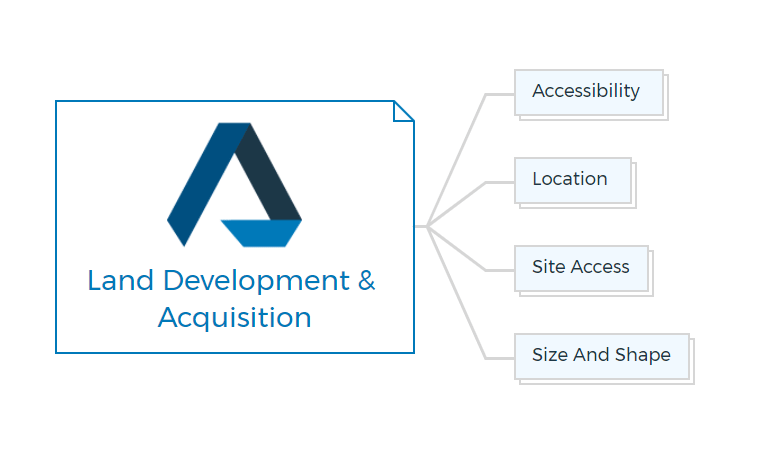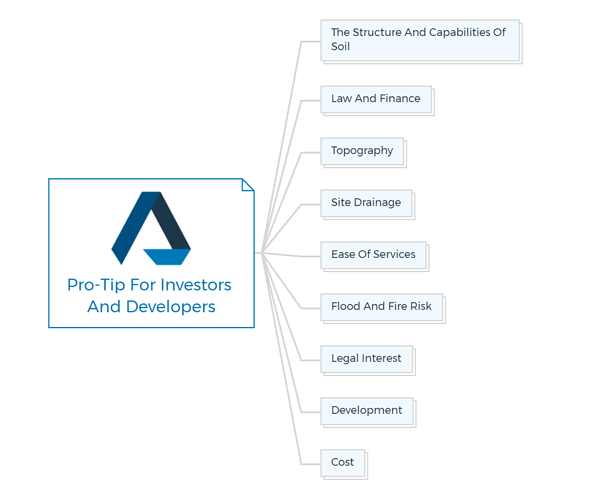Site Acquisition Process
Little Unknowns That Make A Big Difference When Acquiring Sites For Property Development
Site Acquisition Process starts once you’ve completed a thorough site due diligence & financial feasibility using a feasibility software.
Once you have shortlisted a potential site, you may think you’re in the clear, but you’re not quite there yet. You now need to go through your site acquisition process.
Read more about the risks in property development or development finance.
To land your 1st or next project perfectly, check out property developer courses.
What Is Site Acquisition Process?
In short, Site Acquisition Process is an extensive look into just how safe or risky a project is and the steps involved in acquiring a site.
You must consider every potential factor in the site acquisition process and make sure you have the best possible information.
Things To Watch Out For In Site Acquisition Process
Technology advancements have intensified the competition for developers looking for ideal development sites by bringing properties to market faster than ever before.
Along with all of those advancements, there are some key aspects and stages that can assist you in constructing the ideal building.
Among all those stages, the stage of site selection is crucial, and you should pay close attention to it.
The process of selecting and investing in property is not an easy one, particularly for those with limited experience in site analysis or survey.
Thus you should take note of the following aspects and apply them in your land development and site acquisition process.
And in addition, when it comes to deciding if the project is worth the risk of investing, there are three main avenues of investigation are:
- Potential engineering issues
- Potential planning and tenure issues
- Financial analysis
Accessibility
It is critical to have accessibility at your site. The accessibility of a property to main roadways, trains, access roads, and other modes of communication will boost its development potential.
As a property developer, I would say that these considerations are significant in creating industrial, retail, and commercial development.
It’s critical to consider how workers will move to and from industrial sites and how the supply of finished goods and raw materials will be done.
Residential properties will be more valuable if they are easily accessible by private and public transportation. Access to retail locations must be simple, either by vehicle or public transportation.
Finding a development site is the first stage. Enroll in one of my structured property development courses and understand the entire process with real-life scenarios.
You are missing out if you haven’t yet subscribed to our YouTube channel.
Location
When analyzing whether or not a potential development site is ideal for a specific type of development, it is critical to consider its location. The location of a completed development project determines its worth.
Different kinds of development have different requirements. It is vital to determine the value of a site to satisfy specific needs. Developments will have greater potential for profitability if they are more accessible for users.
Check whether there are any adjacent factories, chicken coops, or dog kennels. These might make your property less attractive to live in and harder to sell.
Last but not least, check out the crime rate in your area. Trust your instincts. If you feel something isn’t right, you should take note of it.
To collect the exact information on crime rates in specific neighborhoods, you can also visit the police station or the public library.
This is critical since even the most well-kept neighborhood can have a high crime rate.
If your tenants do not feel comfortable in the property, they will move, leaving you with the expenditures of finding new tenants as well as a loss of income due to repeated vacancies. As a result, choosing a property in a low-crime region is critical.
Site Access
Site access is an important consideration. Any development must have adequate approach roads and a suitable site entrance to accommodate the estimated traffic.
Access roads that are suitable for residential traffic may not be appropriate for industrial areas. The same can be said of site entrances.
It’s essential to keep in mind that construction traffic is frequently heavier than end-user traffic. If access is inadequate for construction traffic, the costs of development are likely to be inflated.
For land or development to be effective in its use, there must be appropriate access. Site access should be sufficient to handle peak traffic, pedestrians, as well as regular workloads.
To make an informed decision and generate positive ROIs, you should read these 13 commercial real estate investment rules.
Lay of the land
When looking for a development site, the size, shape & lay of the land are prominent factors to consider. This is especially true if you intend to construct a home or an apartment.
By looking at the size of the available land, you will know the amount of development that can be done on a site. On the other hand, the shape of land impacts the efficiency of the design, which could affect the buildings’ efficiency.
Pro-Tip
Look for the land where you can construct properties with a northern orientation. They receive more sunlight than properties facing the south, east, or west.
The Structure And Capabilities Of Soil
When looking for suitable development sites, the quality of the land is crucial. It could affect the stability of your structure.
Quality begins on the inside… and then work its way out. - Bob Moawad
The site’s soil structure and load-bearing capacity can influence the type and quantity of buildings built on it.
Sub-soil testing may be a critical preliminary investigation before the development of any site. Thoroughly perform this test to ensure that the complete area is tested for construction.
If any unexpected excavation and foundation work is found, it can add significantly to the development costs.
You should also take into account what is already at that place.
Is the site vacant? Is there a house or trees? Do you need to demolish them to construct your property? Demolition activities will drive up the cost of the project and reduce your profit margin.
Law And Finance
After gathering enough information about the location and the environment, you can list laws that regulate the activities in the locality.
Some places have laws that govern the limits a site can have.
These restrictions may include the land on the sides and front of the site, the building’s height, and the plot’s proportion. By studying and following the laws, you can prevent any troubles with the government.
Calculate the cost of everything, including the costs for the site, utilities, and any other future payments. To avoid going bankrupt, ensure that all costs and payments are within your budget.
Know Your Numbers to Flip, Develop, Or Control Any Property with the in-demand Property Development Feasibility Suite.
Topography [Site Contour Plan]
Again the suitability of land for different development projects broadly depends on the topography of the land.
For example, if all other factors are equal, flat or gently sloping land is more likely to be ideal for development than steeply sloping land. This does not mean that the latter can’t be developed.
Many cities have large areas of steeply sloping land where significant development takes place.
By seeing the market economics, any experienced person would say that construction costs would be substantially higher on sloping terrain than on flat and easily accessible sites.
The slope refers to the incline of the land. Although flat sites are easier to construct on, they are not always the best.
While planning development on a gentle slope, you could have an improved water drainage system. You might need to level the slope before starting the development.
Industry Insiders’ Secrets To Managing Risks & Avoiding Mistakes & Pitfalls In Property Development
Get the Risks & Mistakes Bundle Now
Includes 5 x detailed eBooks [120 pages]
✓ Risks In Property Development - Industry Insiders Guide (26 Pages)
✓ 10 Big (Financial) Property Investing Mistakes Made By Investors (58 Pages)
✓ 7 Property Development Mistakes And How To Avoid Them (8 Pages)
✓ 5 Reasons Buy-and-hold Investors Fail At Property Development (12 Pages)
✓ Property Mastermind: 8 Skills Needed For Property Development Success (16 Pages)
Site Drainage
As I already mentioned, property with a gentle slope can provide you with the benefits of natural drainage, which is quite important when considering the suitability of the land.
If the land does not have a natural drainage system, a developer may need to employ a costly design and construction and possibly implement advanced land drainage schemes, which will add to the cost.
Bad drainage features aren’t always visible to the untrained observer, so a proper site assessment should be accompanied by extensive local research.
Ease Of Connecting Services
Whenever I select a piece of land for my development project, I check the availability of different services there.
Along with this, the ability to provide services within moderate cost limits are significant development considerations.
Amenities such as water supply, sewerage, electricity supply, telephone lines, and perhaps gas supplies are not readily available at reasonable prices; the land is likely to be of limited interest to potential buyers.
Such land is of no use for property developers too.
Don’t worry if you lack development experience or a degree. You can still become a successful property developer in 10 simple steps.
Flood And Fire Risk
All construction sites are susceptible to fire and flooding. Some sites are more vulnerable than others. It is best to invest in properties that fall into the low-risk category.
This is because lower insurance premiums are possible due to the lower risk of fire and flood. This means that there is a higher demand for your more developed properties.
Natural disaster-prone properties are difficult to sell or rent. After all, who wants to live in a place that isn’t secure? To mitigate the risks, you will need to make further investments.
These investments, in turn, may increase costs and decrease profits.
Learn More
Legal Interest
When deciding whether the land is suitable for development, the legal interest available in the land is critical.
In general, developers will favor scenarios in which they may purchase the freehold interest in land and that such interests are unencumbered.
If only a leasehold interest is available, developers will typically seek a long leasehold interest. A lease is long enough to allow the developer to reap the full benefit of all subsequent development activity on the property.
Whether a developer buys a leasehold or freehold interest in land for development, he must ensure that no encumbrance makes it challenging to develop a rational project or results in poor money returns.
Development
Not only the current amenities are essential, but also future ones. The area can see a significant increase in property values if there are plans for new schools, hospitals and public transport.
Commercial development can also raise property values. If you are looking for a house, find out if any new commercial or residential developments are being planned.
It is a good idea to check with your local planning office about any proposed developments or new builds. If there is a lot of construction, it will indicate that the land is good for you to purchase.
However, it will make it harder to attract tenants and increase the competition.
Also, consider the impact on the area’s desirability. It’s crucial to think about whether you’d be happy with the suggested development.
This will assist you in locating tenants that are interested in living on your property. If you’re not satisfied, walk away!
Property Development & Construction Costs
Property investment may be stressful; there are no assurances, and a downturn in the economy can rapidly put you in a problem.
Before you commit to buying a real estate investment, make sure you can afford it and that it will not put excessive strain on you, your family, or your finances.
Investing in the future is always a good thought, but it should never come at the expense of your current quality of life.
You must locate an investment site that balances all of the criteria, even if it takes a long time to find the right property for you.
Win your investors for the upcoming projects with your first No Money Down Property Development Deal.
Why Developers Love Land Development?
Developers typically prefer to work on the site that has not been developed before, commonly known as “virgin land” (or “white land”), because it generally causes fewer issues than previously developed property.
There are some reasons why white land is a preferred choice of many professional developers:
- The development will be easier when a clear, undeveloped site is available.
- There will be no delays due to problems caused by protected buildings.
- Virgin land is typically available in more appealing physical locations, such as those closer to the countryside and away from urban degradation and decay regions.
- The use of white land for development frequently allows for a more flexible design approach.
- When virgin land is developed, sewerage and other facilities are frequently supplied for the first time. They are more likely to be accepted by property purchasers and developers because they will be modernized and built according to the latest design criteria.
Redevelopment Of Previously Used Land
Property Developers also opt for the redevelopment of the previously used land. Potential property developers consider some crucial factors for this purpose:
- It may be possible to use existing road and service infrastructures to reduce the public services cost, benefiting the local government and service providers, as well as the developers, property users, and property purchasers.
- Existing urban regions can be restored, reversing the trend of urban decline.
- The developer can work in a familiar setting, potentially lowering development risks.
7 Physical Attributes That Directly Impact Your Bottom Line In Site Acquisition Process
Engineering Issues
Potential engineering issues cover a wide variety of physical concerns, both in terms of where exactly your development will affect and how it will be affected by natural phenomena.
Environmental And Heritage
A small number of properties are affected by governmental regulations regarding environmental and property concerns. However, the penalties for violating those regulations can be quite steep.
Therefore, it pays to investigate any potential environmental or heritage issues with your property at every level of government (federal, state, and local) to determine if there are any potential conflicts.
If there are, then the consequences could range from a total ban on development to restricting development to minor cosmetic changes.
Flooding Or Flood Zones
In areas where floods are a realistic concern, some land will have certain restrictions as a result. Contacting local authorities should give you quick and easy information regarding whether parts of the site will be affected.
If parts are affected, then you will need to determine if the unaffected areas are big enough to accommodate your plans.
The additional costs of protecting against floods and paying for insurance may be enough to tip the site away from profitability.
Geotechnical
The content of the ground is an essential factor for every possible development. In the worst-case scenario, unstable earth or dangerous contaminants in the soil can completely prevent progress until extensive work is done.
However, even if a geotechnical survey before you purchase the site doesn’t reveal anything, that doesn’t mean the money was wasted. The results of the survey will still be needed when it comes to designing the foundations for your development.
Mining
In areas where mining activity either is currently happening or happened at some point in the past, you’ll want to know exactly where and whether your site was affected.
The construction and collapse of mining tunnels can shift the ground, leading to instability and the possibility of a sudden shift in the future.
The last thing you want is for a nearby tunnel to collapse at some point in the future and compromise your foundation.
Utilities
When it comes to utilities, there are a number of different factors you will need to consider. First, you will need to consider if any water, power, or communication lines run through the site and how they would factor into your development plans.
Second, you’d need to figure out how to incorporate your development into the utility grid and how easy or difficult that would be. Third, you will need to ensure that local utility providers have the necessary capacity to support your business.
Rainwater (Stormwater) Discharge
All properties must have a legal point of discharge. You will likely need to specify a point of discharge in order to get a development permit, but some permits do allow some leeway in how soon the point of discharge has to be set up.
If a site has no viable point of discharge or if the only options would interfere significantly with your development plans, then you may need to look elsewhere.
Planning And Tenure
Once the physical concerns are out of the way, you will have to deal with paperwork and regulations regarding ownership.
Titles
When evaluating the title to the site in question, there are a number of details that you should pay particular attention to.
For example, whether there is an easement could substantially alter your plans for the land.
Whether there is an encumbrance could determine just how profitable the venture would be, while any unregistered dealings could play a significant factor as well.
While title issues wouldn’t necessarily affect your plans as drastically as an old mine shaft beneath the site might, you still want to know as much as you can before you commit.
Zoning
Contact the local government to get details on city zoning laws for the site acquisition process.
If the regulations conflict with your plans for the site in question, then you want to know as soon as possible so that you can either search for a new site or negotiate with the authorities.
You may be able to turn your plans to a type of development that would be acceptable to the current zoning laws or they may even be willing to make adjustments or exceptions to the zoning laws themselves.
Searches
Some additional searches can come in very handy and save you a great deal of money and stress down the road.
A lawyer can help you obtain relevant searches related to land titles, electrical authority, Land Tax, Contaminated Land and Environmental Management Register, Mines and Energy, rail, rates, Environmental Protection, and Main Roads.
A battery of searches can help you quickly identify problems and deal with them before they can sneak up on you.
Conclusion | What To Do Next
So, this was all about land development and site acquisition. It becomes easy to design the perfect development plan once you have chosen the suitable land.
Allow me to assist you if you are scared or worried about your first development project.
You can either join my real estate mentoring program for property developers or enroll in structured property development courses.
Both these options will help you to make your next property development project a success.
FAQs
What is the Site Acquisition Process?
The Site Acquisition Process examines how safe or risky a project is and the stages needed in securing a location.
During the site purchase process, you must analyze every feasible factor and ensure that you have the most up-to-date information.
Why is Site acquisition significant in any real estate development project?
One of the most crucial steps in planning for the building or developing any form of real estate project is to acquire a site.
The attributes that the real estate must exhibit to be a successful candidate for the project’s purpose are usually defined first in site acquisition projects.








